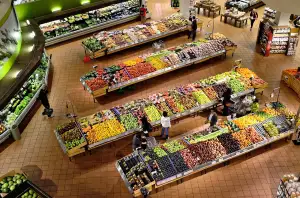Delicious Baby Weaning Recipes: Nourishing Your Little One's Transition to Solid Foods at Home

Baby weaning, also known as complementary feeding, is the gradual introduction of solid foods into a baby's diet alongside breast milk or formula. This milestone usually begins around six months of age when babies start showing signs of readiness, such as sitting up and showing interest in food. It is an important stage in a baby's development as they transition from exclusive milk feeds to a more varied and textured diet. Introducing a variety of nutritious foods during this time sets the foundation for healthy eating habits later in life.
Benefits of Homemade Baby Weaning Recipes
When it comes to introducing solid foods to your baby, homemade baby weaning recipes offer numerous benefits. Firstly, preparing meals at home allows you to have full control over the ingredients used, ensuring that your little one receives fresh and nutritious food without any added preservatives or artificial flavors. Homemade recipes also enable you to cater to your baby's specific dietary needs and preferences, such as allergies or intolerances, promoting a healthy relationship with food from an early age. Additionally, cooking at home can be more cost-effective than purchasing pre-packaged baby food, saving you money in the long run while providing wholesome and flavorful options for your growing child.
Essential Nutrients for Baby's Development
Ensuring your baby receives essential nutrients is crucial for their growth and development during the weaning process. Key nutrients include iron, which supports brain development and energy levels; calcium for bone strength; vitamin C to boost immunity; and healthy fats for brain and nerve function. Incorporating a variety of fruits, vegetables, whole grains, and proteins into your baby's diet will help provide these vital nutrients. Remember to consult with a pediatrician to ensure your little one is receiving a well-rounded diet tailored to their needs.
Simple Fruit Puree Recipe
**Simple Fruit Puree Recipe**
Introducing your little one to the world of solid foods can be an exciting journey. One of the easiest and most nutritious options for baby weaning is homemade fruit purees. Fruits are packed with essential vitamins, minerals, and fiber that are crucial for your baby's growth and development.
To make a simple fruit puree, start by selecting ripe and soft fruits such as bananas, apples, pears, or peaches. Wash the fruit thoroughly, peel if necessary, and remove any seeds or pits. Cut the fruit into small pieces to aid in cooking and blending.
Next, steam or boil the fruit until it is soft and easily mashable. You can also bake certain fruits like apples for a sweeter flavor. Once cooked, transfer the fruit to a blender or food processor and blend until smooth. If needed, you can add a little water or breast milk/formula to achieve the desired consistency.
Remember to let the puree cool before serving it to your baby. You can store any leftover puree in an airtight container in the refrigerator for up to three days or freeze it for future use.
By preparing homemade fruit purees, you can ensure that your baby is getting fresh and natural flavors without added sugars or preservatives. This simple recipe not only introduces new tastes to your little one but also helps in developing their palate for a lifetime of healthy eating habits.
Nutritious Vegetable Mash Recipe
Vegetables are essential for a baby's growth and development due to their rich nutrient content. A simple and nutritious vegetable mash can be made by steaming or boiling a variety of vegetables such as sweet potatoes, carrots, and peas until they are soft. Once cooked, mash the vegetables together with a fork or blend them for a smoother texture.
These vegetables are packed with vitamins A, C, and K, as well as fiber which aids in digestion. Vitamin A is crucial for vision development, while vitamin C helps boost the immune system. The iron found in these vegetables supports brain development and overall growth. By introducing a variety of vegetables early on, you can help your baby develop a taste for healthy foods that will benefit them throughout their lives.
Protein-Packed Baby Cereal Recipe
Protein is essential for your baby's growth and development, making it important to include in their diet. Here is a simple and nutritious protein-packed baby cereal recipe that you can easily prepare at home:
Ingredients:
- 1/4 cup of quinoa
- 1 cup of water or breast milk/formula
Instructions:
1. Rinse the quinoa thoroughly under running water.
2. In a small saucepan, bring the water or breast milk/formula to a boil.
3. Add the rinsed quinoa to the boiling liquid.
4. Reduce heat, cover, and simmer for about 15 minutes or until the quinoa is cooked and soft.
5. Remove from heat and let it cool slightly before serving.
Quinoa is a complete protein source, containing all nine essential amino acids necessary for your baby's growth. It also provides fiber, iron, magnesium, and phosphorus, contributing to overall health and well-being. This protein-packed baby cereal recipe is a great way to introduce this nutritious grain to your little one's diet during their weaning journey.
Tips for Introducing New Flavors and Textures
When introducing new flavors and textures to your baby during weaning, it's important to start slowly and offer a variety of foods. Begin with single-ingredient purees before moving on to combinations. Gradually increase the texture from smooth purees to mashed and chopped foods as your baby becomes more accustomed to solid foods. Introduce a wide range of fruits, vegetables, grains, and proteins to help develop their palate and ensure they receive a diverse array of nutrients essential for their growth and development. Be patient and persistent, as it may take several attempts before your baby accepts new flavors.
Safety Guidelines for Baby Weaning
1. Always supervise your baby during feeding to prevent choking incidents.
2. Introduce one new food at a time and wait a few days before introducing another to monitor any potential allergic reactions.
3. Ensure all utensils and cooking equipment are thoroughly cleaned and sterilized to avoid contamination.
4. Avoid adding salt, sugar, honey, or cow's milk to your baby's meals as they can be harmful to their developing system.
5. Cut food into small, manageable pieces to reduce the risk of choking.
6. Check the temperature of the food before serving to prevent burns or scalds.
7. Consult with your pediatrician before introducing any new foods, especially if there is a family history of allergies.
8. Be mindful of potential choking hazards such as nuts, seeds, whole grapes, hot dogs, and popcorn.
9. Store homemade baby food properly in airtight containers in the refrigerator and use within a few days or freeze for later use.
By following these safety guidelines, you can ensure a smooth and safe transition for your little one as they explore new flavors and textures during their weaning journey.
In conclusion, introducing your baby to solid foods through homemade recipes is a wonderful way to nurture their developing palate and provide them with essential nutrients for growth and development. By preparing fresh fruit purees, nutritious vegetable mashes, and protein-packed baby cereals at home, you have control over the ingredients and can ensure that your little one receives a variety of flavors and textures. This early exposure to wholesome foods can help establish healthy eating habits that may last a lifetime. Remember to consult with your pediatrician before starting the weaning process and enjoy this special time of exploring new tastes with your baby.
Published: 12. 04. 2024
Category: Home



